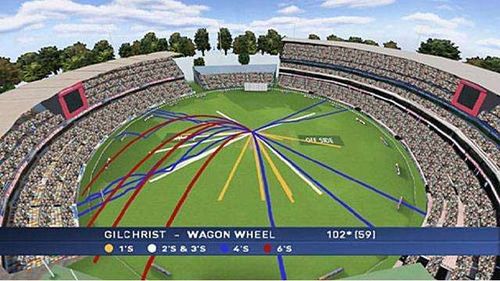
[Video] What goes on behind the scenes to bring cricket matches to your television screens perfectly?
TV coverage of live cricket has gone to another level altogether in the last few years. Viewers now enjoy super slow motion replays, different views of the ground at impossible angles, world class commentary, priceless reactions of players on the ground to important moments.
However, behind all this lies a full fledged team of production staff, comprising a team of around 100 people, who take care of all aspects of the television delivery of a cricket match. Let us delve a bit further and see what goes on behind bringing the finished televised product to our TV screens.
The Commentary team
The moment we tune in our TV sets for any match, we see a set of renowned commentators, mostly ex cricketers, who are there in front of our screens, ready to take us through the day. Let us look at the example of Sky Sports commentary team.
It boasts of many stalwarts including the likes of David Lloyd, Michael Holding, Mike Atherton, Nasser Hussain, Ian Botham, Shane Warne, Shaun Pollock and David Gower.
While deciding which commentators to put together, the lead guys in the production team looks at various factors. Henderson at Sky Sports, looks into these issues for the team. According to him:
“Holding is "an outstanding lead commentator", while Warne "only does colour". And some pairings produce easy banter, while others generate sparks. Hussain and Warne exemplify the latter, which is why I like to put them together; Botham and Warne the former.”
Clearly, a lot goes behind the decision to select the pairings of commentators we see at cricket matches. Next time you see a cricket match, try to identify a few of these patterns in commentary.
Cameras, crew and other production staff
If we take a tour of any broadcaster’s production unit, we can find out the amount of cameras and other technical gadgets that are used in current times to broadcast a live match.
Sky’s production unit, including the commentary boxes and camera gantry, consists of around 20 cameras on-site, over 30 microphones and over 15 miles of cabling for one T20 match. This goes up to as high as 30 cameras for an ODI and 40 cameras for a Test match. Clearly the favorite angles and pictures we see on screen, require a lot of on field equipments and personnel.
During the Ashes 2013, 120 people formed the production crew as they looked to get the best crowd shots, instant player reactions as well as working with match officials to provide the definitive angles for the Decision Referral System.
Inside Sky’s main cricket production truck – worth a pretty cool £14m – we had the director who offered the feedback to the umpire, which in turn lead to key decisions in a game. There were 78 TV screens in the director’s truck which showed what was being transmitted, a preview screen, every camera angle, replays, plus more.
Liz Thorne, Production Manager for Sky Sports, told the Chronicle: “A single day’s cricket is the work of over 100 people, who are all committed to delivering the best programme we can to our viewers.
“We’re constantly trying to improve what we do and devote hours to delivering the exceptional finished product you see at home.”
Broadcasting of the event
Broadcasting the event live across the world is another big challenge that requires a lot of inputs and effort from the personnel involved. The first glimpse of the broadcast control room is suffocating. The floor is a maze of cables that run all over before climbing into various machines, monitors and screens.
The room itself is square and windowless. Personnel from various departments - engineering, Hawk-Eye, the camera-control wing, graphics, sound, communication, and the EVS (which relays the replays) - sit here for long hours.
Along with the director, there are his assistants, who give global broadcasters ten-second countdowns before the end and start of an over, and for drinks and innings breaks.
Clearly doing all of these different activities, and blending them seamlessly helps in bring out the refined finished products to our T.V. sets. Next time you see a match, a moment of appreciation for the backroom staff and work involved would be great.
Here is a video from Channel 9, which further sums up the story:

